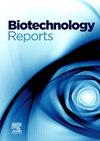Production and evaluation of rabies immunoglobulin extracted from chicken egg yolk
Q1 Immunology and Microbiology
引用次数: 0
Abstract
This study investigated the potential of using laying hens to produce rabies immunoglobulin (RIG) due to concerns about an African Horse Sickness outbreak in 2020. The hens were immunized with rabies vaccine, resulting in the production of Immunoglobulin Y (IgY) antibodies in their egg yolks. The study found that using polyethylene glycol 6000 (PEG) was the most effective method for extracting anti-rabies IgY from egg yolks in terms of amount (1.87 mg of IgY from one mL of egg yolk), purity (83 %), and cost-effectiveness. Further purification through affinity chromatography increased the purity to 95 %, as confirmed by 1D GeLC-MS/MS, showing a purity of up to 98 %. In addition, IgY extracted using PEG demonstrated the highest neutralizing activity compared to the caprylic acid and ammonium sulfate methods. It was estimated that only 8 eggs are needed to produce a vial of RIG with the same potency as equine RIG (1000 IU/vial).

鸡蛋黄狂犬病免疫球蛋白的制备及评价
由于对2020年非洲马病爆发的担忧,本研究调查了使用蛋鸡生产狂犬病免疫球蛋白(RIG)的可能性。用狂犬疫苗免疫母鸡,使其蛋黄产生免疫球蛋白Y (IgY)抗体。研究发现,使用聚乙二醇6000 (PEG)从蛋黄中提取抗狂犬病IgY的最有效方法是在数量(每mL蛋黄中含有1.87 mg IgY)、纯度(83%)和成本效益方面。通过亲和层析进一步纯化,纯度提高到95%,经1D GeLC-MS/MS证实,纯度可达98%。此外,与辛酸法和硫酸铵法相比,聚乙二醇法提取的卵磷脂具有最高的中和活性。据估计,只需要8个鸡蛋就可以生产出一瓶与马RIG (1000 IU/瓶)相同效力的RIG。
本文章由计算机程序翻译,如有差异,请以英文原文为准。
求助全文
约1分钟内获得全文
求助全文
来源期刊

Biotechnology Reports
Immunology and Microbiology-Applied Microbiology and Biotechnology
CiteScore
15.80
自引率
0.00%
发文量
79
审稿时长
55 days
期刊介绍:
Biotechnology Reports covers all aspects of Biotechnology particularly those reports that are useful and informative and that will be of value to other researchers in related fields. Biotechnology Reports loves ground breaking science, but will also accept good science that can be of use to the biotechnology community. The journal maintains a high quality peer review where submissions are considered on the basis of scientific validity and technical quality. Acceptable paper types are research articles (short or full communications), methods, mini-reviews, and commentaries in the following areas: Healthcare and pharmaceutical biotechnology Agricultural and food biotechnology Environmental biotechnology Molecular biology, cell and tissue engineering and synthetic biology Industrial biotechnology, biofuels and bioenergy Nanobiotechnology Bioinformatics & systems biology New processes and products in biotechnology, bioprocess engineering.
 求助内容:
求助内容: 应助结果提醒方式:
应助结果提醒方式:


